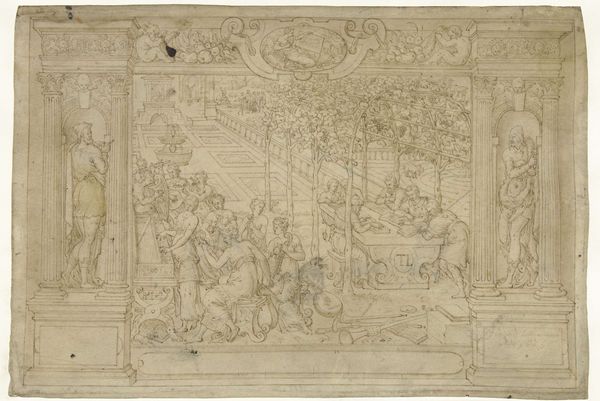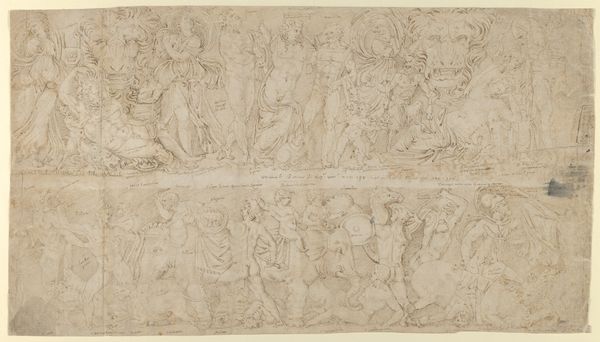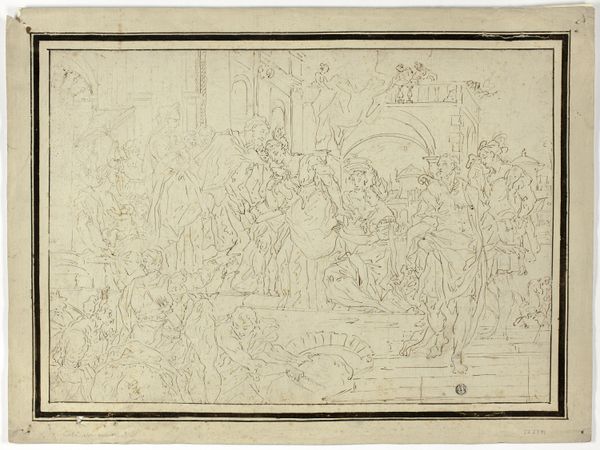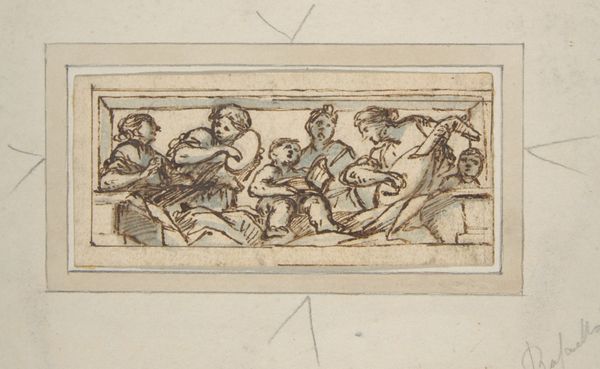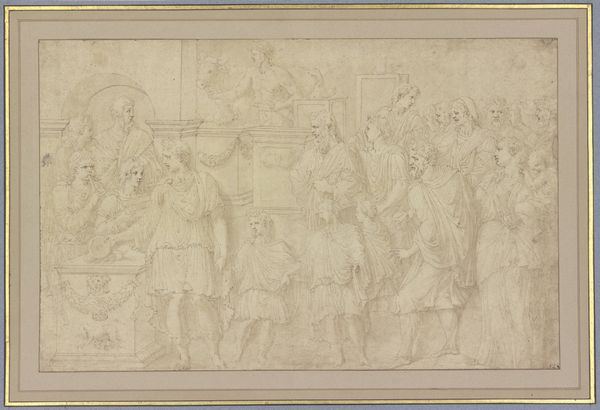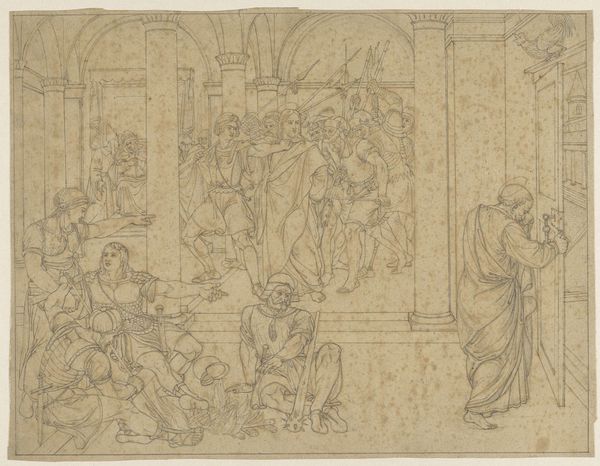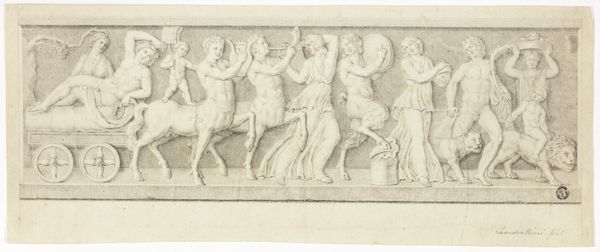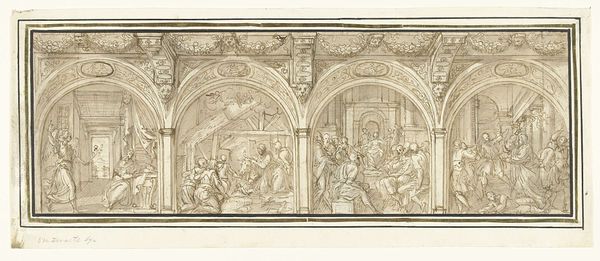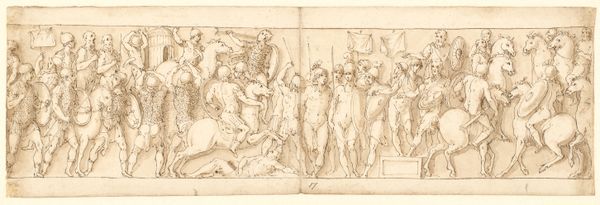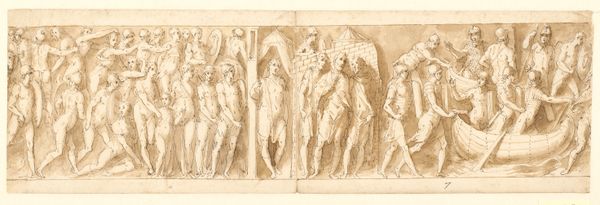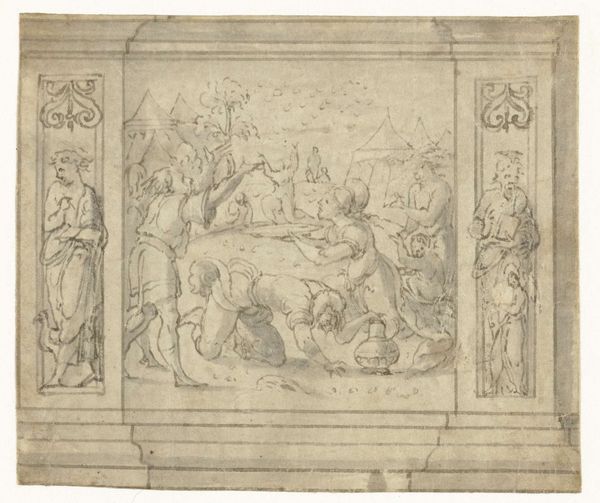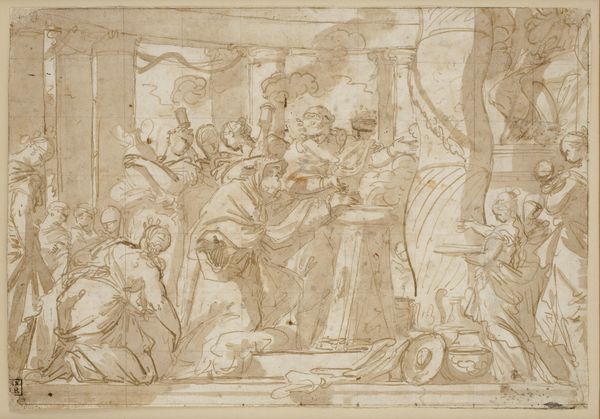
Dimensions: height 244 mm, width 355 mm
Copyright: Rijks Museum: Open Domain
Curator: This print, “Hoofdman van Kafarnaüm smeekt Christus om hulp,” made by Jan Punt around 1777, is striking. What grabs your attention about it? Editor: It's the… fragility, almost, of the etching. Given the historical narrative, I expected something more imposing. How does the medium impact the message, in your opinion? Curator: Precisely! The etching and engraving processes here are vital to consider. Notice how the labour-intensive technique, a skilled craft, renders a biblical scene usually reserved for grand paintings or sculptures accessible to a wider audience through printed reproduction. Editor: So the choice of print democratizes the religious narrative, makes it… consumer-friendly, almost? Curator: Indeed. Prints at this time allowed for widespread dissemination of religious and historical scenes. Consider the social context – a rising middle class with disposable income and a desire for art. This etching bridges the gap between high art and everyday life. Do you think that makes it less valuable in a theoretical sense? Editor: I see what you mean. Does mass production cheapen the experience? Still, someone had to craft the plate to begin with, and the level of detail is fantastic! Curator: And those decisions regarding the specific tools and techniques… it is interesting how the materials shape how an idea moves from one class to another! What's been your takeaway from discussing it in this manner? Editor: I didn't even consider how the *making* of the work influenced the meaning until now. It definitely expands how I see art’s relationship to society!
Comments
No comments
Be the first to comment and join the conversation on the ultimate creative platform.
